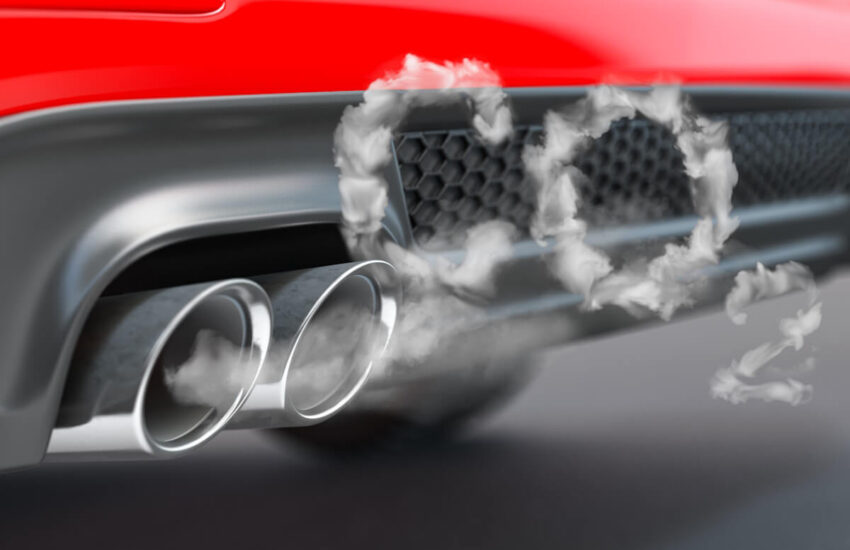In a world increasingly focused on producing cars for green driving, understanding the carbon footprint of different vehicles is more important than ever. To make decisions about our modes of transportation, we need to consider both the production and operational emissions associated with different vehicle types. In this post, we’ll explore some of the vehicles with the highest carbon footprints, examining both their production and operational impacts.
Carbon Footprint to Produce the Vehicle:
The carbon footprint associated with producing a vehicle encompasses a wide range of factors that contribute to its environmental impact. Manufacturing a car involves extracting raw materials, processing them, assembling components, and transporting them to the assembly line. Each of these steps consumes energy and resources, emitting greenhouse gases into the atmosphere. Additionally, the choice of materials, production methods, and the location of manufacturing facilities play a significant role in determining the overall carbon footprint of a vehicle. Following we explore some of the key factors that make certain vehicles stand out in terms of high production emissions.
Hummer EV: The resurrected Hummer, now as an electric pickup truck, has garnered attention for its massive battery and luxurious features. However, these features come at a cost – a high production footprint. Manufacturing the Hummer EV involves resource-intensive materials and energy-intensive processes, leading to substantial emissions before it even hits the road.
Ford F-150 Lightning: As another contender in the electric truck market, the F-150 Lightning also has a large battery and a hefty body. These factors contribute to significant production emissions. While electric vehicles (EVs) are celebrated for their lack of tailpipe emissions during operation, their production processes still generate carbon emissions.
Ram TRX: On the other end of the spectrum, we have the Ram TRX, a gasoline-powered, off-road-focused pickup. This beast of a truck requires considerable resources and energy to manufacture, resulting in a high carbon footprint from production.
Mercedes-Benz G-Class: The iconic G-Class SUV, known for its robust construction and premium materials, embodies luxury and power. However, these qualities translate to a substantial production footprint. The high-quality materials and complex manufacturing processes contribute to significant emissions during production.
Land Rover Range Rover: Similar to the G-Class, the Range Rover is a symbol of luxury and opulence in the SUV segment. Its premium features and hefty build come at a cost – a high production footprint. The Range Rover’s production involves resource-intensive processes and materials, leading to substantial emissions.
Carbon Footprint to Operate the Vehicle:
The carbon footprint of operating a vehicle is primarily linked to its fuel or energy source and how efficiently it utilizes that source during regular use. Operational emissions occur when a vehicle burns fossil fuels, whether it’s gasoline or diesel, and releases carbon dioxide (CO2) and other pollutants into the atmosphere. Factors such as fuel economy, driving habits, and distance traveled significantly influence the operational emissions of a vehicle. Below, we’ll delve into specific vehicles known for their high operational carbon footprints due to factors like excessive fuel consumption or power-hungry engines.
Dodge Challenger SRT Hellcat: If you’re seeking pure muscle car power, the Hellcat delivers, but it also comes with a price in terms of fuel consumption and operational emissions. Its monstrous V8 engine devours fuel, resulting in sky-high operational emissions.
Chevrolet Corvette Z06: Another muscle car, the Z06 offers exhilarating performance, but this comes at the expense of fuel efficiency. Its powerful engine burns through fuel rapidly, leading to significant operational emissions.
Toyota Tundra 4×4: This full-size pickup truck is known for its reliability and capability. However, the Tundra’s large size and thirsty engine translate to considerable gas consumption and emissions during operation.
Nissan Titan XD: Similar to the Tundra, the Titan XD is a heavy-duty pickup with a powerful engine. While it’s designed for heavy lifting, it’s also a gas guzzler, resulting in high operational emissions.
Porsche 911 Turbo S: The high-performance Porsche 911 Turbo S is the epitome of sports coupe excellence. However, its exhilarating power comes with a trade-off in terms of fuel efficiency. This sports car burns through fuel rapidly, leading to significant operational emissions.
It’s important to note that this list is not exhaustive, and there are various other vehicles across different categories that may also have high carbon footprints. Additionally, while these vehicles may have high operational emissions, individual driving habits and fuel choices can significantly impact their overall carbon footprint.
Moreover, the transition to electric vehicles (EVs) is an important trend to consider. While some EVs, like the Hummer EV and the F-150 Lightning, have notable production emissions due to their large EV batteries, they produce zero tailpipe emissions during operation. As battery technology and energy sources continue to evolve, the production footprint of EVs is expected to decrease over time, making them a more sustainable choice in the long run.
Wrapping It Up
When evaluating a vehicle’s environmental impact, it’s essential to consider both production and operational emissions. While some vehicles, like the ones mentioned above, may have high carbon footprints, individuals can make a significant difference by choosing fuel-efficient models and adopting responsible driving habits. The automotive industry is also evolving rapidly, with increasing emphasis on sustainability, so keep an eye out for more eco-friendly options in the future.
AutoByPayment.com offers accurate estimates of new and used car loan payments based on self-selected credit score, current rebates, down payment, and trade equity or negative equity, without customers having to provide their personal identifying information such as email and phone.
